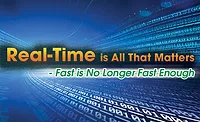The Power of Mobility is the Power of Now
There is nothing more powerful in life and business than the ability to harness the power of now. Humans are natural procrastinators and the more time we put between an actual event and the documentation of that event, the more error and inefficiency we introduce in the process.
That’s why now, more than ever, our society is not only embracing information at the speed of now, it is demanding it. This insatiable appetite for real time information is apparent every time I go out for dinner and witness table after table of people glued to their mobile devices, consuming the latest information. While we may regret this evolution in our culture, we can’t ignore it. The speed at which information now travels is giving birth to new mobile technologies, which have exciting current and future applications for the restoration industry. No longer is information limited to a piece of paper or even a single computer or server. Now, the power of the cloud paired with true mobile technology can unleash a host of process improvements for managing restoration businesses.
Mobile documentation (notes, photos, etc.) is just scratching the surface and has been around for a while. Even though concepts like mobile asset tracking, work flow management, time keeping, etc., are not new technologies, they were generally reserved for more advanced restoration contractors. While many are just catching up with the idea of paperless transactions and real-time mobile management, there are leaders in each market who have successfully used transparency (real time data acquisition and delivery) to change the game. They have put distance between themselves and the competition by realizing the efficiencies gained by implementing these technologies to differentiate themselves.
Mobility is Mental
My team and I have worked with more than three thousand restoration businesses all over the world to implement mobile operating strategies. Through that experience, we have learned that domesticating a mobile strategy is a mental hurdle for some. It is a profound shift for our industry, which has a long history of operating on paper with the ability to backdate documentation.
While there are certainly challenges with connectivity in many areas, changing the mindset of the organization is the cornerstone to a successful transition.
Changing the Message of Mobile
I have noticed much of the messaging around the drivers behind moving to true mobility is focused on who is watching the data. While it is true a contractor’s data footprint is more important than ever, mobility is pivotal to sustainable management of that footprint. It should not be a company’s main or sole focus for the shift in operating style. The message that an onsite staff hears when that is the focus is “Big Brother is watching,” and that creates resistance. That resistance has been known to take the form of someone’s device having far more data connectivity issues than their coworker in the same area. We have found that changing the message from a focus on the data needs of the client to internal operational benefits of real-time mobile execution yields better results, and magically better data connectivity.
Catch Up Now Before the Next Shift
Mobile technology is already changing quickly in both a general and restoration sense, but I expect changes to be coming down the pipe even faster in the next year or so. If your business does not have the mobile basics down yet, catch up now before the next wave of changes hits your market.
Implementing any process change can take time to complete and adding new technology only increases the learning curve, so be sure to take those factors into consideration in your planning. Once comfortable with the idea of real-time mobile claims management, making incremental improvements to your process gets easier and easier.
It is always taking the first step that is the hardest.
A Shift in Focus
One of my favorite parts of the tradeshow circuit is meeting new field staff who want to show me the latest trick they invented/discovered in our mobile application. I find we are most popular with field staff these days and I am totally O.K. with that. While office staff was our original focus, that has shifted to onsite personnel. There were many market influencers responsible for that move (client requirements, real-time data needs, etc.), but more importantly, it was the understanding of difficulties of the field staff and the significance of allowing their administrative workload to be complete before they finish their day in the field. Shifting admin time into the normal workday for a field technician or project manager not only increases profit, but employee satisfaction and mobility, which is the key.
Follow a Roadmap for Success
Adopting a mobile-centric strategy often requires a good amount of change management – but by following a step-by-step roadmap in building toward a long-term vision, you can increase your success rate significantly. If staying competitive is important to your business, consider leading your market in mobile capabilities and don’t lose your edge.
Looking for a reprint of this article?
From high-res PDFs to custom plaques, order your copy today!








